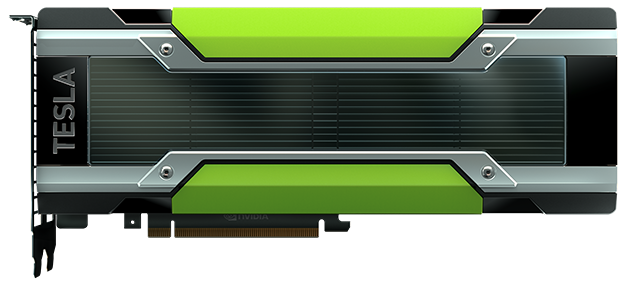Lightning-Fast: A Look Into The NVIDIA Tesla K80

NVIDIA
NVIDIA has long been known for its quality products, but the K80 GPU Accelerator is on another speed level. The enterprise-grade chip is used for specialized, intensive workloads, such as powering supercomputers to solve complex scientific questions. While other chips see uses in common, everyday tasks, the K80 is a creation of the Tesla Accelerated Computing Platform. This explains why it is used for data analytics or scientific computing. NVIDIA made sure that original equipment manufacturers, software developers, and software vendors would get involved with the K80. This, added with NVIDIA's Compute Unified Device Architecture makes the K80 a formidable GPU accelerator.
K80 VS K40
This product easily outperforms its predecessor, the Tesla K40 GPU accelerator. According to tests, the K80 delivers twice the performance and twice the memory bandwidth of the K40. When pitted with other graphics products outside the Tesla line, the difference in power becomes more pronounced. If we compare the K80 with the GeForce GTX 980 desktop graphics card, the latter delivers 5 teraflops of single-precision performance. The former easily outdoes this with its score of 8.7 teraflops. You might think the K80 is NVIDIA's fastest, but the brand shows no signs of stopping there. Their Pascal GPU Architecture, another product line, lets GPUs exchange data with each other faster, which then leads to improved performance for computers.
Overall value of the K80
Still, the Tesla K80 keeps its value as one of the accelerators that can be used for servers. This means that companies or enterprises that are using servers, be it for their internal emails or data storage, can take advantage of the K80 to ensure the efficiency of their daily operations. Upon closer inspection, you'll learn that the K80 is actually composed of two graphics processors that help it handle heavy-duty tasks. In terms of figures, the chip has 24 gigabytes of memory, 4,992 processing cores, and a memory bandwidth of 480 gigabytes per second. It also comes equipped with a GPU Boost feature, which can increase the performance level in case a particularly demanding application on the computer necessitates it.
Is it worth investing in?
What makes the K80 accelerator worth investing in by businesses is its ability to lower costs for data centers that enterprises rely on. Usually, a business or an organization that intends to improve its data performance would have to secure additional servers that are capable of processing or storing huge day-to-day data. Because the K80 is powerful on its own, using it won't make the additional servers a necessity anymore, or at least lessen the number needed for improved data performance.
According to NVIDIA, the K80 accelerate is designed to boost the throughput of real-world applications by five to ten times, which can let customers save up to 50 percent for accelerated data centers. Throughput, or the rate at which something is processed, means that enterprises can get more done in a shorter amount of time. For instance, research centers that invest in the K80 would experience more scientific discoveries, while web services such as shopping sites would see a rise in user engagement or the visits nad purchases on any given day. With the profit potential of the K80, it's no surprise that many clients already possess this accelerator.
For more awesome blogs, dive into:
Top 5 reasons why you must have a good API
What's the difference between a VPC and a VPN? The definitive answer
Public cloud, Private cloud, and Hybrid cloud
SaaS vs PaaS vs IaaS: Beginner's Guide to Which Model Is Better for You
Virtual private cloud vs private cloud: differences and definitions
Everything you need to know about XaaS (everything as a service)